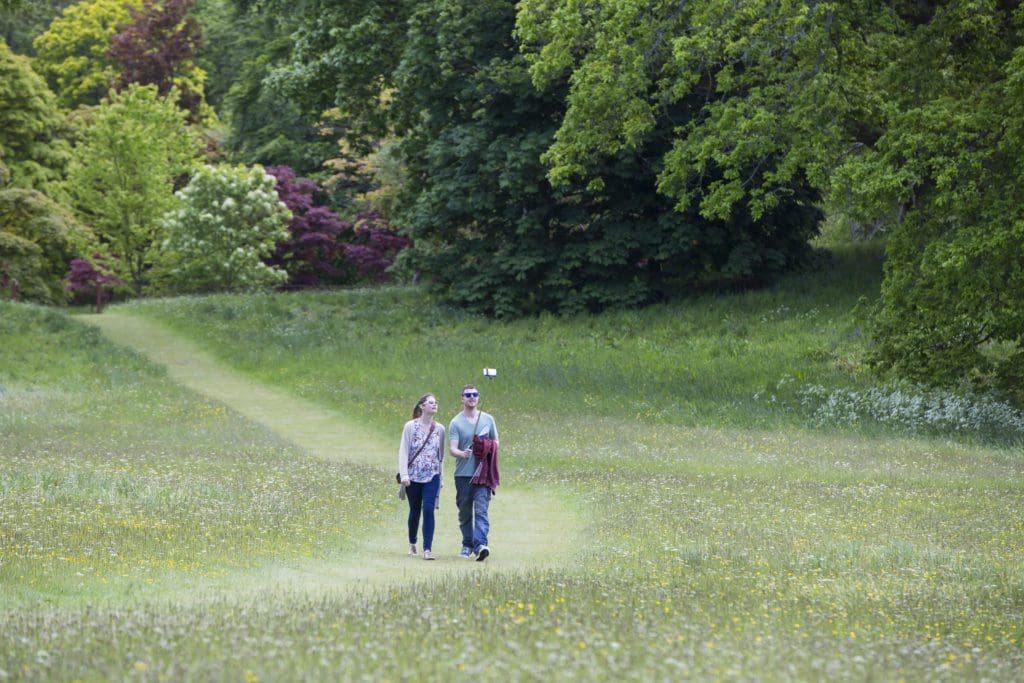Ahead of National Meadows Day, this Saturday 2 July, National Trust Cymru are celebrating the revival and restoration of 146 hectares, or an area about 40 times as big as the Principality Stadium in Cardiff, of meadows across Wales so plants, pollinators and wildlife can thrive.
The Welsh countryside isn’t as rich in nature as it used to be with around 97% of meadows lost since the 1930’s. In 2019, the conservation charity embarked on a three-year project in partnership with Plantlife Cymru to bring back vanishing meadow landscapes for everyone to enjoy.
Through participating in the Magnificent Meadows Cymru project, National Trust Cymru are aiming to make a total of 213 hectares of meadows by the projects end in December 2022. This figure will exceed the original target of 176 hectares at 25 sites cared for by the Trust in Wales.
Lauri MacLean, National Trust Cymru Nature Conservation Officer said:
“This project covers both the creation of new meadows at places where no habitat existed and improvement of the condition of existing grasslands, increasing their potential for supporting a broader range of biodiversity.
A flower rich meadow can attract butterflies such as Meadow Brown and Common Blue, rare bumblebees and supports declining farmland birds such as skylark and meadow pipit. By improving biodiversity at each site, we will be increasing the resilience of habitat for priority species. Transforming once uninteresting grasslands into flourishing spaces for plants, pollinators, and wildlife.”
At Penrhyn Castle near Bangor in North Wales two new meadows are now in full bloom with a diverse range of flowers, attracting swallows that feed on the insects supported by the meadow. The introduction of yellow rattle, a plant that slows the growth of grass allowing other species to thrive, has transformed the space in front of the castle.
Surrounding Paxton’s Tower in Carmarthenshire are nearly 3 hectares of restored meadows. Last summer seed donated from meadows at the National Botanic Garden of Wales was used to enrich the grassland around the tower. Local seed sources make Welsh meadows that are resilient in the landscape and recognised for local character.
Ian Dunn, CEO, Plantlife, added:
“For plants, people, pollinators and the planet it is essential that we both arrest the alarming decline of wildflower meadows and move to make more magnificent meadows. This blossoming conservation project – on track to exceed targets – is at the forefront of the meadows revolution; from schools to care homes, hospitals, road verges and even rubbish dumps we have created 200 hectares of new meadows including 50 new urban meadows.
Plantlife research shows that one square metre of wildflower meadow in high summer can be home to an average of 570 flowers on a single day. That means just one acre of wildflower habitat can contain over 2.3 million flowers – so, if you get the chance do visit one and immerse yourself in the sights and sounds of this brilliance of nature.
This National Meadows Day I will be enjoying the peace and tranquillity of a meadow buoyed in the knowledge that there is a real passion and determination to reverse the downwards trend and safeguard these special places for future generations to enjoy.”
Rebecca Williams, Assistant Director National Trust Cymru said:
“By working in partnership on the Magnificent Meadows Cymru project we are helping to bring back the birds, bees and butterflies to our wildflower rich spaces for people to enjoy and aid nature’s recovery.
With the meadows in our care now at their midsummer best we want to encourage everyone to connect with nature on National Meadows Day and throughout the summer.”
Across Wales National Trust Cymru gardens and countryside sites linked to the Magnificent Meadows project are inviting everyone to discover meadows on National Meadows Day. Help survey pollinators on the Vile at Gower or at Dinefwr near Llandeilo, take a self-led tour through the meadows at Southwood Estate at Newgale or pick any meadow and enjoy the sights and sounds of nature.

